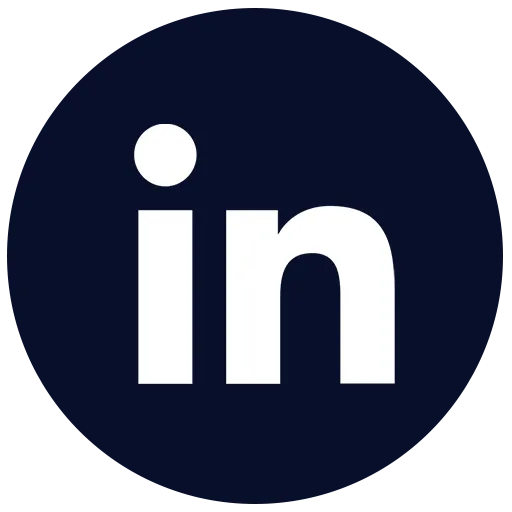240-447-5261
Blog

Blog

How Geofencing Can Streamline Campaigns for Healthcare Providers
Geofencing is changing how healthcare providers connect with patients. By using this location-based technology, healthcare facilities can create boundaries around specific areas, sending targeted messages to anyone within them. This approach allows providers to communicate effectively and deliver relevant information to potential and existing patients.
With geofencing, healthcare campaigns become more personalized and efficient. Providers can target patients who are nearby or frequent a particular area, such as clinics or community centers. This precise targeting helps engage patients by delivering timely reminders, wellness tips, or special offers that cater to their specific needs and locations.
For healthcare providers, implementing geofencing includes not just the technology but a keen focus on patient privacy and compliance with regulations. It is essential to balance innovation with respect for privacy to maintain trust while offering better health outcomes. As the healthcare sector continues to embrace digital transformation, geofencing offers a valuable tool to advance patient care and streamline marketing efforts effectively.
The Basics of Geofencing and Its Benefits for Healthcare
Geofencing is a technology that uses GPS or RFID to create virtual boundaries in the physical world. It's like drawing a digital fence around specific locations. When someone enters or exits these defined areas, a triggered response is activated, such as sending a notification or an advertisement. For healthcare providers, this means the ability to reach patients within a designated geographical area efficiently.
One key benefit of geofencing in healthcare is enhanced communication. Providers can send timely reminders about vaccinations, check-ups, or general health tips when patients are near a clinic or hospital. This proactive approach ensures patients are engaged with their healthcare providers, potentially improving patient outcomes by encouraging timely medical attention.
Geofencing also allows for targeted marketing strategies. Healthcare facilities can promote specific services to people who live or work nearby. For example, an eye clinic might send promotional offers for eye exams to potential patients in their vicinity. This method increases the likelihood of attracting individuals who are already conveniently located near the facility.
Additionally, geofencing aids in managing resources more effectively. Providers can monitor the flow of patients in real-time, allowing better planning and allocation of staff and resources. By leveraging geofencing, healthcare providers enhance patient engagement, optimize service delivery, and maintain a more organized workflow, ultimately contributing to better healthcare experiences.
Implementing Geofencing in Healthcare Campaigns
To set up a successful geofencing campaign, follow these essential steps:
1. Define Your Goals: Begin by identifying the specific objectives you want to achieve. This could be increasing clinic visits, promoting new healthcare services, or boosting patient engagement.
2. Select Target Locations: Determine the geographic areas where you want the geofences. These could be around hospitals, clinics, or areas with a high concentration of your target demographic.
3. Craft Compelling Messages: Develop clear and engaging messages that you will send to those entering or exiting the defined areas. Ensure these messages are both informative and motivational.
4. Choose the Right Platforms: Decide which communication channels to use, such as text messages, push notifications, or emails, based on what suits your patient base best.
5. Test and Launch: Run a trial to ensure everything functions correctly, then launch the campaign to see how well it reaches and engages patients.
When implementing geofencing, consider factors like location precision and the potential for notification fatigue from too many alerts. Prioritize patient privacy and adhere to HIPAA and other privacy regulations to maintain trust. Patients should always have the option to opt-in or out of geofencing communication to respect personal preferences.
By thoughtfully planning and implementing these campaigns, healthcare providers can effectively use geofencing to enhance service reach, improve patient care, and ensure compliance with regulations. Through strategic location selection and messaging, providers can leverage this technology to achieve significant improvements in how they connect with and serve their patients.
Enhancing Patient Engagement and Experience
Geofencing offers healthcare providers a powerful tool to enhance patient engagement. One strategic approach is to use location-based alerts to welcome patients as they arrive at healthcare facilities. This can be an automated message offering details about their appointment or reminding them to check in.
Another effective strategy involves sending personalized health tips or reminders when patients enter the geofenced area. For example, patients receiving chronic disease management could benefit from periodic health check stubs or medication reminders timed to when they are near their doctor’s office. This helps keep patients engaged and encourages them to stay on top of their health regimes.
Providing timely notifications also creates a more patient-centered experience. When patients receive relevant updates, like changes in healthcare services or availability of new treatments, they feel more informed and cared for. Implementing geofencing can also include special promotions or discounts on health services, tailored specifically to individuals based on their location within the geofence.
These personalized interactions can foster higher levels of satisfaction and loyalty. Healthcare providers can significantly elevate patient engagement and deliver a more responsive and patient-friendly experience by using targeted messages and timely reminders.
Measuring Success and Optimizing Campaigns
To effectively measure the success of geofencing campaigns, healthcare providers should focus on several key performance indicators. Tracking foot traffic and conversion rates helps illustrate how many potential patients visit the facility because of the geofencing notifications. Analyzing the rate of message response can further indicate engagement levels.
Regularly evaluating these metrics allows for data-driven decisions. For example, if a particular message is not resulting in increased patient visits, it might require rewording or changing the target area. Also, employ A/B testing to refine strategies and identify which messages yield better responses.
Providers should also consider patient feedback as a valuable tool for campaign improvement. Gathering insights from patient surveys can pinpoint areas where the geofencing experience falls short or excels.
To optimize geofencing initiatives, continually assess and adjust campaigns based on analytical insights. This might include altering the timing of notifications, experimenting with new locations, or updating offers and content to better align with patient needs and interests. By regularly revisiting and refining geofencing strategies, healthcare providers can maintain effective and efficient campaigns that resonate with their audience.
Conclusion
Geofencing stands out as a highly effective tool for healthcare providers aiming to streamline their campaigns and enhance patient interactions. Its ability to engage patients at the right time and place makes it a valuable asset in today's healthcare environment. By leveraging geofencing technology, providers can make informed decisions to offer meaningful, personalized interactions, which ultimately leads to improved patient outcomes and satisfaction.
Enter the world of precision-targeted geofencing marketing with Connects 360 LLC. Our geofencing solutions simplify outreach and elevate patient engagement uniquely. Connect with us today to craft campaigns that resonate with patients and maximize your healthcare impact.

© Connects 360° LLC |
Privacy Policy | All Rights Reserved
Created with Connects 360 Web Services.

© Connects 360° LLC | All Rights Reserved | Privacy Policy | Created with Connects 360 Web Services.





